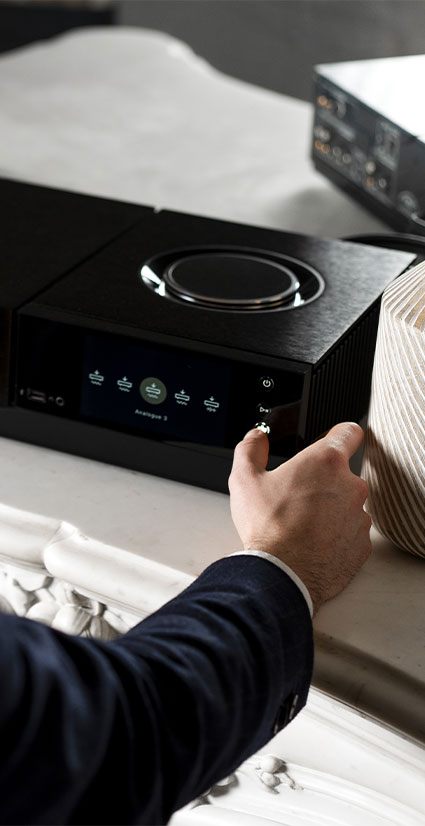Welcome to Naim Support
Welcome to the Naim support pages. We believe that many of your questions can be answered using the resources below. Please use these in the first instance when looking to resolve any issues, failing that please contact your retailer for further support.
Our specialist retailers are trained to be able to assist if something is wrong with your product, if they aren’t able to resolve any issues they will be able to contact us on your behalf and arrange service or repair if needed.
If you aren’t having any luck with the process above please contact us using the details at the bottom of this page.
after-sales service
If you have a problem with one of our products, we invite you to contact our customer service department using our contact form.
Customer Service
By submitting this form you agree that Focal/Naim may collect the personal information provided above in order to process your request.
Tips
If you would like advice on our products before making a purchase, or if you have any questions on how to use them, please do not hesitate to contact us via our contact form.
Need advice ?
By submitting this form you agree that Focal/Naim may collect the personal information provided above in order to process your request.
You can also contact us directly by e-mail at [email protected] or by phone: 01722443405
A question?
Frequently Asked Questions
- Mu-so & Qb
How do I control the lighting?
- Mu-so & Qb
Cleaning your Mu-so 2nd Generation
- Mu-so & Qb
HDMI Troubleshooting
- Mu-so & Qb
Network Troubleshooting
- Classic
What is the RC5 socket for?
- Classic
Can I connect a Naim phonostage?
- Classic
How do I add an external headphone amp?
- Classic
What external devices can I connect?
- Classic
What is a subwoofer for and how do I connect it?
- Classic
Connection guide for pre-amps and amps
- Classic
I am about to move to a country which supplies 115V instead of 230V, do I need to swap my NDX 2?
- Classic
I have just bought my NDX 2, but the remote doesn’t work
product documentation
useful links
Other resources

NETWORK TROUBLESHOOTING
A guide to troubleshooting any network issues you may be experiencing with your Naim Product.

WHITE PAPERS
In-depth explanations of Naim technologies and innovations across our entire range.

SERIAL NUMBERS
Check your product serial number to find out its date of manufacture.

PRODUCT UPDATES
Find and download the latest software to ensure you are making the most of your Naim product.

PRODUCT HISTORY
A complete timeline of Naim product launches, stretching back to our foundation in 1973.

UPGRADE PATH
Find the path to upgrade your system and improve musical performance.

JOIN THE COMMUNITY
Receive a sneak preview of the latest audio innovations from Focal and Naim by subscribing to our exclusive newsletters. Be among the first to discover our new products, and receive privileged information straight to your inbox.
Newsletter
New products and limited editions
Invitations to exclusive events
Benefit from special offers

